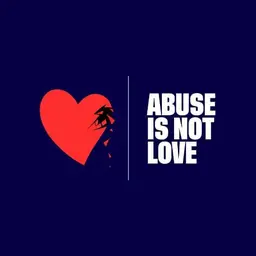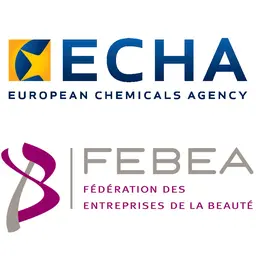
That is what we can call a buzz. On June 7, the UFC-Que Choisir Association denounced the presence on the market of 23 cosmetic products containing ingredients banned for several months – outlaw products. The brands concerned, L’Oréal, among others, defended themselves by claiming they had ceased placing these products on the market several months before the ban. FEBEA, the Federation representing the French cosmetics industry, evoked the complexity of distribution chains. And the DGCCRF, the cosmetics market ‘watchdog’, announced controls would be carried out. CosmeticOBS has searched for further explanation and investigated to understand the ins and outs of the question…
Here is a short reminder of the whole story. On June 7, the UFC-Que Choisir Association published a report on ‘Undesirable ingredients in cosmetics.’ They pointed out 1,000 products containing, to them, undesirable ingredients, but above all, they denounced the presence on the market of 23 cosmetic products containing preservatives banned for several months, and even several years.
More specifically, for two of them, the banned substance was Isobutylparaben,
banned since July 30, 2015
. As regards the 21 others, it was Methylisothiazolinone, which is highly allergenic, that was found on the list of ingredients of leave-on products, in which it has been
banned since February 12, 2017
.
What the law says
Regulations on cosmetics – here, European Cosmetic Regulation no 1223/2009 – is clear: if an ingredient was deemed ‘risky’ for consumers’ health by the independent expert committee in charge of its safety assessment (the SCCS), and the decision to ban its use was enacted by the European Commission, the industry is given a deadline to comply with the new rule. Over this period of time, manufacturers should no longer use the ingredient at stake in their new products, and instead reformulate their existing products or withdraw them from the market, so that when the deadline has been reached, no newly banned cosmetic product can be sold to any consumer.
In addition, they should inform their distributors of their obligation to do the same.
Traceability and deadlines
As a matter of fact, as regards Methylisothiazolinone, the period granted to get compliant was of a little over six months, since the regulation that provided for its ban as from February 12, 2017 was published on July 22, 2016. However, the SCCS had published its Opinion on December 12, 2013 , which did allow the industry quite some time to get ready…
It should also be reminded that every cosmetics production should go with a batch number printed on every product packaging and representative of a full file including, among other information, the manufacturing date and the list of ingredients… This way, traceability is guaranteed and products can be recalled in case of a problem.
But then, how come, several months after the ban, there are still products containing prohibited ingredients on the market???
At first, anyone might be tempted to think the cosmetics industry chose financial interests over compliance with regulations and consumer safety. CosmeticOBS asked the main players involved in this case, and… reality is actually much more complicated.
A complex distribution chain
At L’Oréal, the world’s cosmetics leader that lacks neither means nor regulatory services, a member of this department explained that they ‘do not understand what happened. We reformulated all our products a long time ago, and we informed our distributors of that. But we can only control those to whom we sell our products. Then, they are free to resell them to other distributors, to their subsidiaries, or even abroad… In that case, it is up to them to inform the people to whom they resell our products…’
Patrick O’Quin, President of the FEBEA (French Federation of Beauty Companies), which represents the French cosmetics industry, delivered the same analysis. He revealed that, usually, the brand that makes the products sells them to a wholesaler, who can resell them to a purchasing platform, from where they can be re-dispatched to supermarket chains or other distributors, who can retrocede them to retailers – more or less important stores, hairdressers or beauticians, including those who work at their customers’ homes… ‘Even among chemists,’ he added, ‘we know that some orders can be placed by “big clients”, but on behalf of their colleagues, and the parcels are not even opened by the clients who place the orders, since the idea is to take advantage of quantitative discounts.’
He went on mentioning products in the ‘end-of-life’ phase (i.e.: products approaching the best-before date), purchased by discount stores, which are resold through bids within the European Union… Or also ‘pure players’ online, who have their – European – headquarters in Dublin, Cyprus, Gibraltar, or in the Anglo-Norman islands… ‘Retroceding cosmetic products cannot be banned,’ he reiterated, ‘legislators have only forgotten that those who place products on the market – manufacturers – cannot, within the European Union, ban their products from being resold among intermediates or distributors, nor can they have any control on the market’s stock turnover .’
As a matter of fact, some of the products qualified as outlaws by UFC-Que Choisir were not initially intended for the French market, but ended up there via another distributor and importer chain… without the brand being informed at all!
A cascade of responsibilities
Theoretically, any product cession should go with a transfer of responsibility, and it is up to every seller in the chain to inform the person to whom they retrocede the products of their obligations, in particular in terms of selling or withdrawal deadlines. As for what actually happens…
It does not necessarily come down to deception or intentional fraud from distributors: how many of them, in particular the ‘smallest’, are really aware or even know at all about the obligations imposed by the Cosmetic Regulation?
And even if they were informed about them, especially ‘major’ players, many of them are those that manage their product stock automatically, with bar codes. The thing is, a product reformulation does not always involve a bar code change – in particular if it only consisted in replacing a preservative with another. Between a ‘former’ and ‘new’ formula, sometimes only the list of ingredients (who reads it anyway?) and the batch number have changed. But the latter is much trickier to manage in-store than a simple flash on a bar code. As a result, old stock can end up on the shelf… or remain there.
So, indeed, if we take all this into consideration, finding cosmetics containing ingredients banned for several months on the market is definitely a possibility.
Still, once the findings have been made official, we cannot but hope lessons will be learnt to prevent any similar situation in the future. No doubt this case will have repercussions.
Spring-cleaning to come
Other than legislators, we are expecting the first concrete actions from the market supervisory authorities, which are actually supposed to make operators comply with cosmetics regulations, but also from the industry.
Supervisory authorities to make investigations
Raphaëlle Bove, Director of the Health & Cosmetics Office at the DGCCRF, also answered CosmeticOBS’s questions. To her, ‘there may be multiple responsibilities involved. A distributor may have purchased the products a long time ago from the manufacturer, but they may keep trying to sell their own stock. Still, distributors are not necessarily the main persons responsible. If they can issue an invoice delivered by the manufacturer which, for example, dates back to March 2017 and shows the manufacturer sold them the product in which the substance is still present, it is the manufacturer that is liable for it. And if a manufacturer kept selling whole batches shortly before the ban deadline, their loyalty to the distributor may be questioned.’ If evidence is found showing who is responsible, there will be penalties…
The DGCCRF has launched investigations. They have set up a list of the products questioned and tried to identify the persons responsible for their placing on the market, in order to check with them the dates when the formulations were no longer made with the ingredients banned and the non-compliant products stopped being sold, as well as the measures implemented to inform the distributors…
However, there are a few products for which no responsible person has been declared. As for the others, some of them are in France, but also Spain, Italy, Germany, the United Kingdom… ‘We already know we are going to need to ask other Member States of the European Union to cooperate,’ Raphaëlle Bove emphasized, ‘and to contact our counterparts abroad for them to contribute to the investigations.’ And that is going to slow it all down, although the DGCCRF hopes to get the results before the end of the summer.
The industry’s role
Without prejudging the conclusions the supervisory authorities will come up with, if, eventually, only the distributors were responsible and found guilty, cosmetics brands whose products were called into question still got a bad reputation, and their image is now tarnished – and that is no good, whether in terms of trust relationship with their consumers or business.
Loïc Armand, President of Cosmetics Europe (the authority representative of the cosmetics industry on the European level), confirmed all this with rather firm words:
‘If certain products contain banned ingredients, they should not be on the market. If certain manufacturers still place products containing banned ingredients on the market today, they are to be blamed and should, and will be penalized by the competent authorities,’
he asserted.
‘It can also be old products with quite long a shelf-life found in stores with low rotation, and which contain ingredients which are now banned, but were not when they were manufactured. However, even if distributors can bear a responsibility, I do claim the responsibility of the person that placed the product on the market, i.e. the manufacturer. The industry does have a role to play, because it involves creating a dialogue and close collaboration between the manufacturer and the whole distribution chain, so that in case of a banned ingredient, the information system can clean the market in a timely manner. You can imagine how complex that can be. In any case, there is no place for any lack of goodwill or dishonesty.’
Let that be clearly noted and understood…
LW-JS














